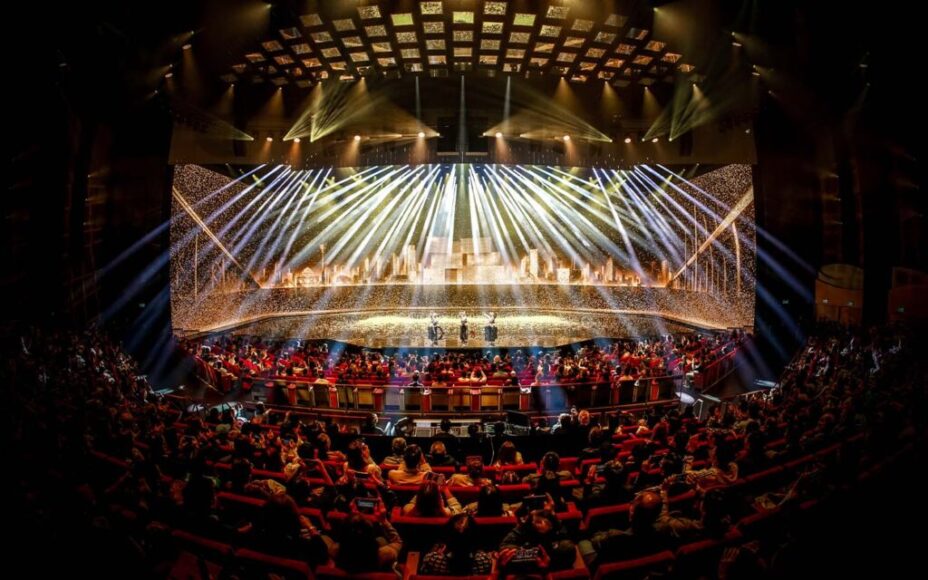The debut of acclaimed filmmaker Zhang Yimou’s latest theatre production marks a defining moment in Macao’s evolution as a world-class destination for performing arts. Macau 2049 blends Chinese heritage with state-of-the-art technology; storytelling with raw spectacle. Its central message is clear: tradition and innovation can coexist, thriving together to shape the future. The production invites audiences to reflect on how modern advancements can enhance, rather than overshadow, cultural identities.
Zhang, an iconic member of China’s ‘fifth generation’ of filmmakers, is renowned for elevating Chinese cinema abroad through works like Hero (2002) and House of Flying Daggers (2004). However, his expertise extends beyond film. Zhang orchestrated the spectacular opening and closing ceremonies of the 2008 Beijing Olympics and has directed numerous other live productions, earning a reputation for grand, visually stunning storytelling.
Macau 2049 is Zhang’s first residency theatre production being performed China’s Greater Bay Area.
A celebration of history and vision
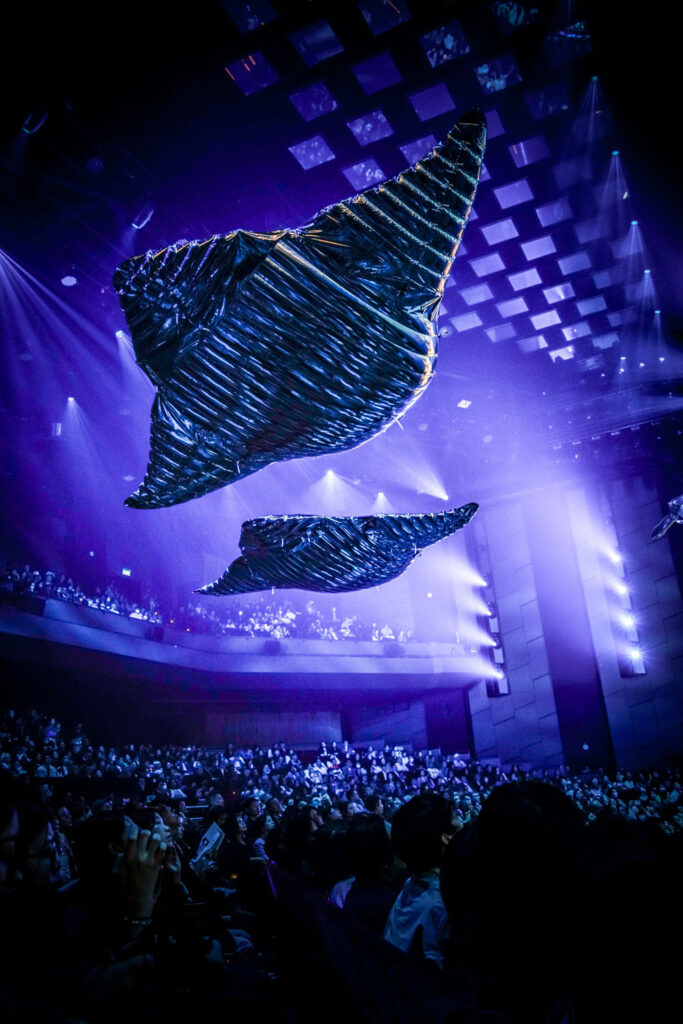
The 80-minute show was conceived to celebrate two significant milestones: the 75th anniversary of the founding of the People’s Republic of China and the 25th anniversary of Macao’s return to the motherland. Its December 2024 premiere coincided with Macao’s commemoration of its quarter century as a Special Administrative Region (SAR) of China.
Macau 2049 looks ahead another 25 years, across the period in which the SAR is set to complete its full reintegration with the mainland. As such, it can be interpreted as a bridge between past, present and future.
Portraying China as a multicultural tapestry
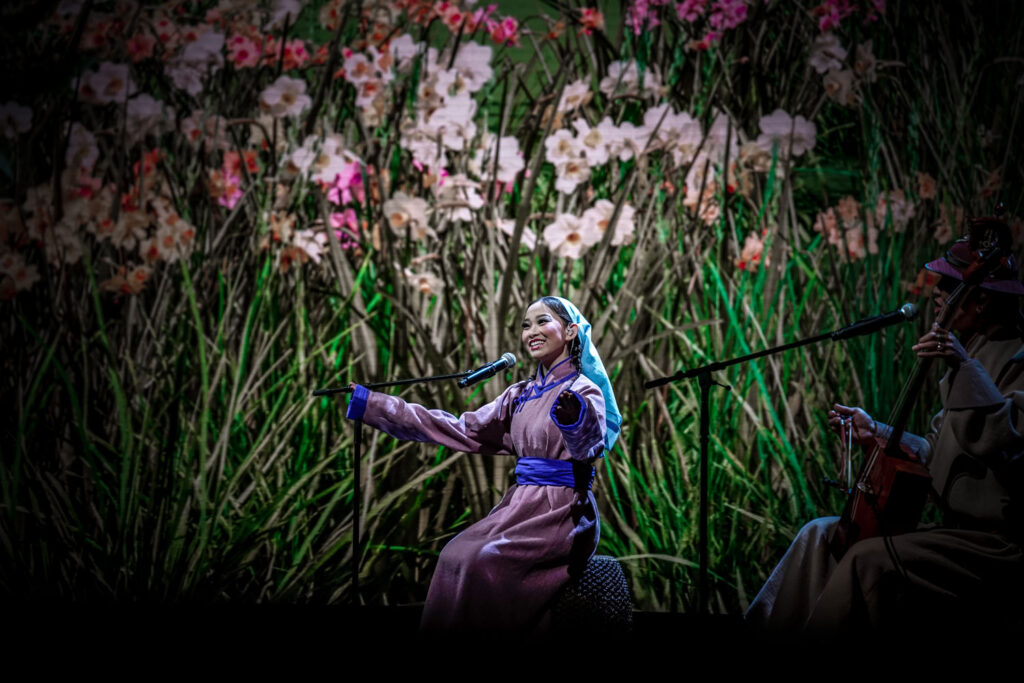
Macau 2049 does not just entertain its audiences, it offers an education into the diversity and depth of Chinese culture. Each segment portrays different aspects of this richness, combining traditional folk arts with futuristic elements that transform the whole theatre into an almost magical realm for the senses.
The opening chapter, ‘Drumming. Shadows’, introduces the audience to the hua’er, a genre of folk music from China’s northwest that’s known for its soulful melodies. The segment’s choreography, pairing live dancers with robotic arms to perform a pas de deux, plays on the interconnection between past and future.
Next, ‘Khoomei. Ethereal’ transports viewers to the steppes of Inner Mongolia through the hypnotic art of throat singing. This chapter’s visual effects evoke the region’s natural beauty. It is followed by ‘Miao Songs. Transcendent’, where laser lights synchronise with the emotive songs of the Miao people, offering a spellbinding homage to this mountain-dwelling ethnic group from southwestern China.
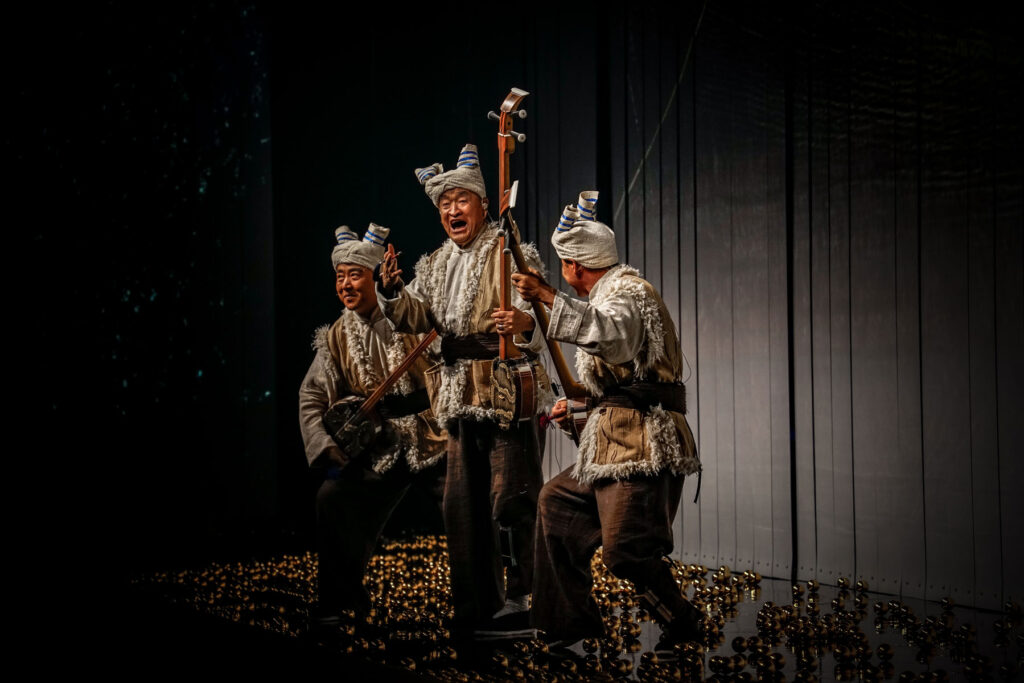
The fourth chapter, ‘The Crossroads Inn. Masks’, explores the vibrant tradition of Peking opera, blending its theatrical grandeur with a narrative that emphasises the warmth of human connection. Next, ‘Yangge. Robots’ manages to convey the essence of Yangge folk dance, known for its lively, joy-filled movements. This enduringly popular style of dance dates back around 1,000 years, having developed during the Song dynasty (960–1279).
Then, ‘Yi Song. Ocean’ ushers in a pair of gigantic flying manta rays, swooping above an audience bathed in blue light. The metallic models move to the sound of traditional songs from southwestern China’s Yi people, creating a truly otherworldly experience.
The penultimate act, ‘Lion Dance. Radiance’, reinvents its namesake ancient artform. Performers in elaborate costumes interact with a kinetic lion sculpture on stage, again melding tradition with technology to bring this beloved and auspicious dance to life.
Macau 2049 winds down with ‘Storytelling. Origin’, a poignant tribute to people from Shaanxi Province. This final segment is a fusion of music and storytelling, lasers and stunning visual projections that transport the audience into the fields and villages of the region while highlighting the optimistic resilience of its people.
Creative collaboration
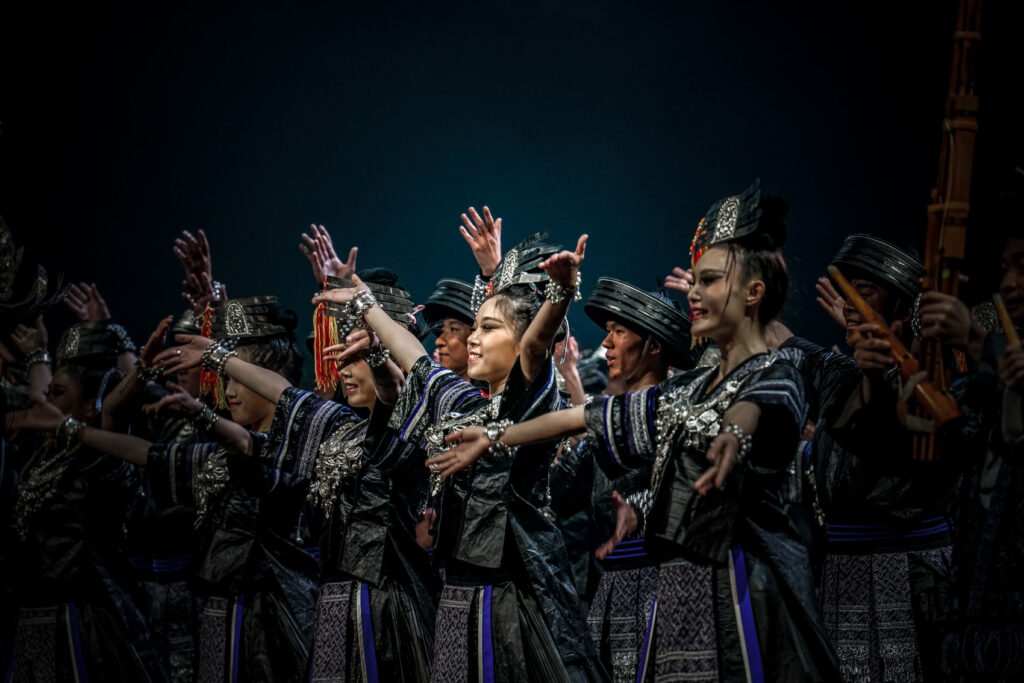
Zhang collaborated closely with a wide range of illustrious names in the international arts arena to pull his ambitious show together. Its choreography is led by Sang Jijia, of Hong Kong’s City Contemporary Dance Company, while Beijing’s Grammy-winning rock star Wu Tong serves as the music director. British holographics expert Dominic Faraway is the visual director, and Bernard Prentice – also from the UK – is in charge of underwater photography. The talented production team also includes hundreds of cast members and behind-the-scenes personnel, testament to its scale.
Presenting Macao as a city of performing arts
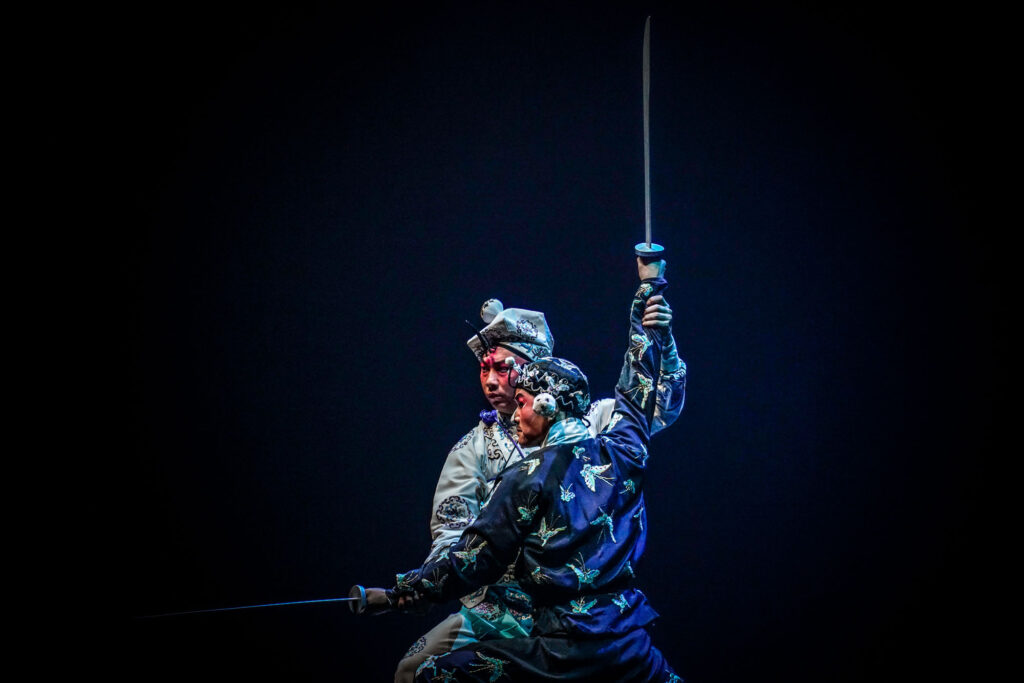
At Macau 2049’s opening in December, Zhang stressed the importance of uniting tradition and innovation in the arts. He emphasised his own hope to “present China’s cultural richness in a way that resonates with new generations” through each chapter of the production
“If we look at the progression of civilisation through a linear lens, one end represents 5,000 years of ancient civilisation, while the other symbolises a future driven by rapid technological advancement.
“Macau 2049 brings together the two extremes of time and space, converging the horizons of East and West. We seek harmony without uniformity, celebrating the diversity of civilisations around the world.”
The show is being performed at Cotai’s MGM Theatre. MGM China’s chairperson and executive director, Pansy Ho, has desrcibed it as an important step forward for the SAR, a mean of strengthening an “identity as a centre of creativity and innovation”. Speaking to media at Macau 2049’s opening performance, she highlighted the city’s efforts to enhance its reputation as a City of Performing Arts.
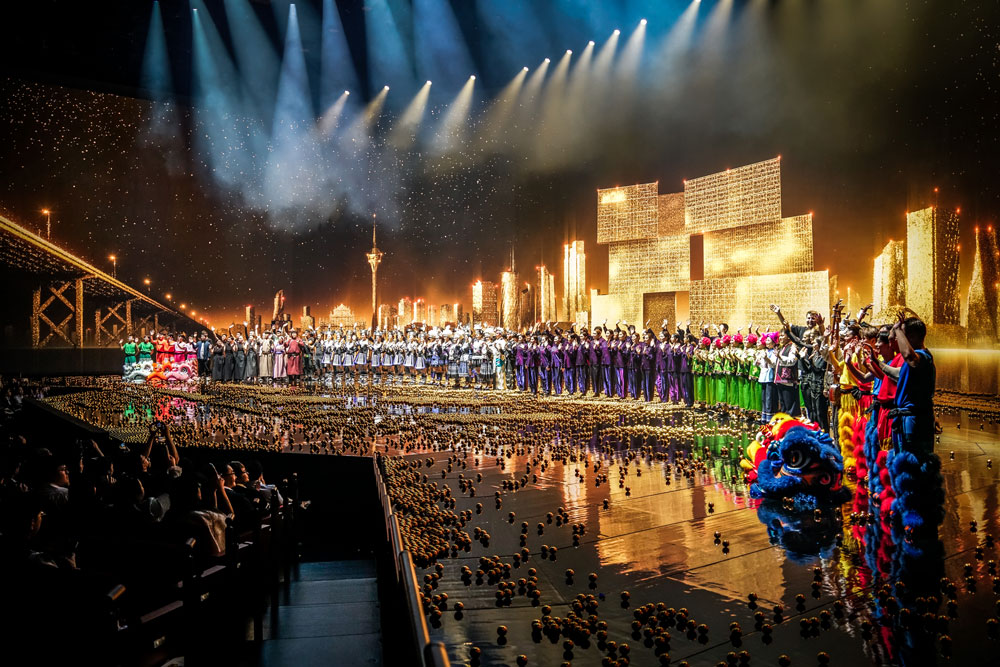
Indeed, Macau 2049 affirms Macao’s potential as an artistic hub for the Asian continent. As the city further embeds itself as an integral part of the Greater Bay Area, this production underscores the complementary roles Macao can play as a protector of cultural identity and a pioneer of artistic innovation within the region.
Through entwining legacies like hua’er with cutting-edge innovations in stage-craft, the performance will surely leave lasting impressions with all who experience it. Perhaps the most significant of these is that Macao’s own unique cultural identity is safe in the embrace of its motherland, for the next quarter century and beyond.
Macau 2049 is scheduled to run five evenings a week throughout its residency at MGM Theater. It is performed in eight languages, with Cantonese narration being simultaneously translated on screens into Mandarin, Portuguese, French, Thai, English, German, Japanese and Korean.
